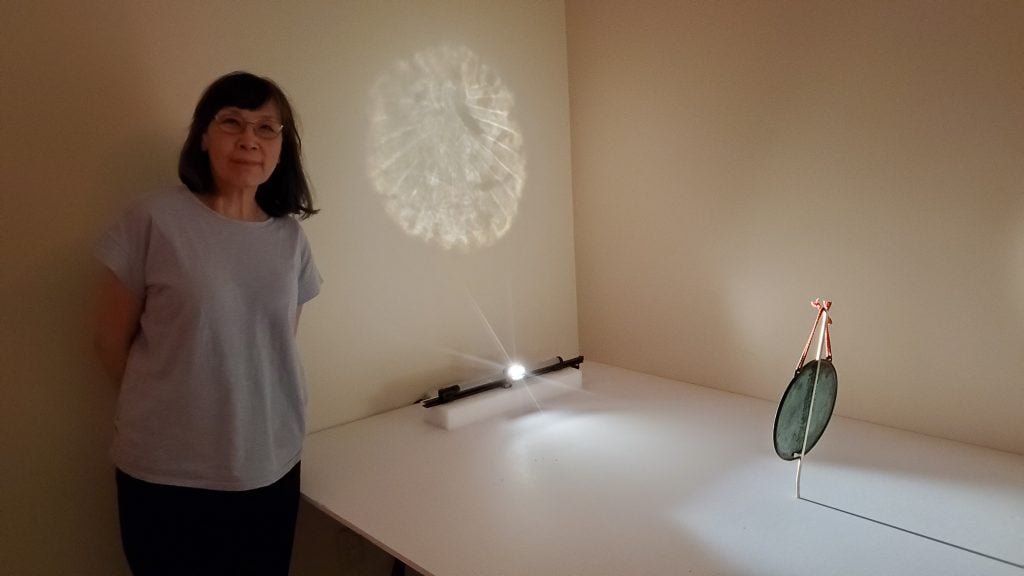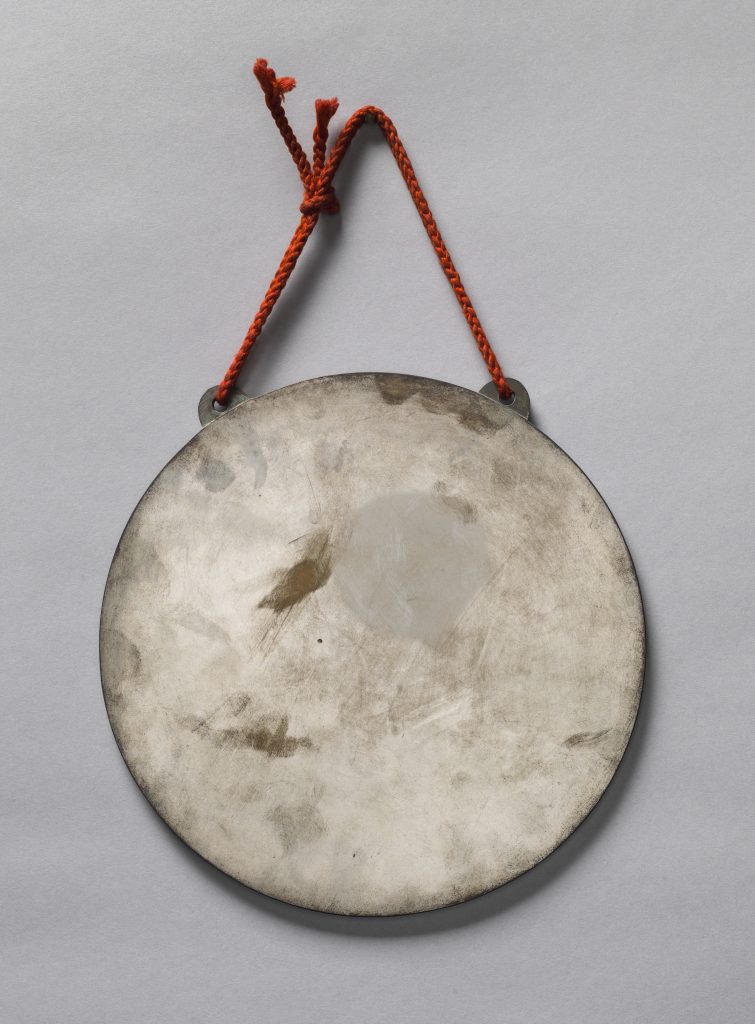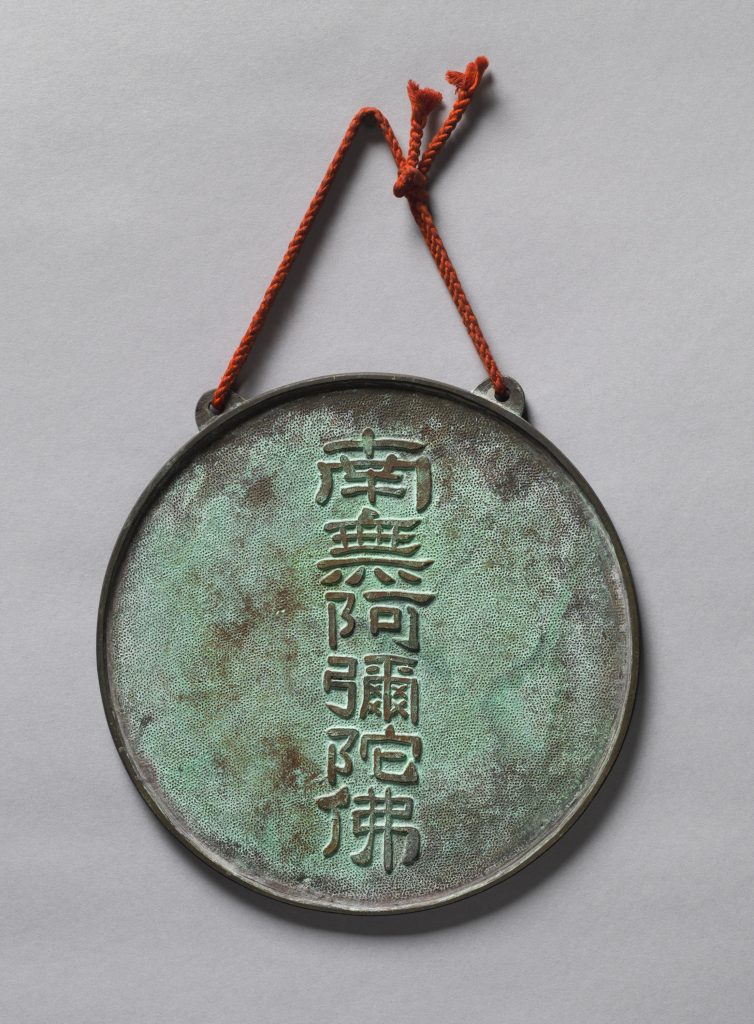Museums & Institutions
Curators Discover a Rare Chinese ‘Magic Mirror’—One of Only Three Known in the West—in the Depths of the Cincinnati Art Museum’s Storage
The magic mirror was for years believed simply to be an unassuming bronze disc.

The magic mirror was for years believed simply to be an unassuming bronze disc.

Vittoria Benzine

Curators at the Cincinnati Art Museum have figured out that an unassuming bronze disc in the museum’s 100,000-strong collection is actually an exceedingly rare magic mirror.
Magic mirrors, also known as transparent or light penetrating mirrors, were first created in China during the Han dynasty (202 BCE–220 CE), according to the museum. “When light is projected on them, the mirrors appear transparent and reveal characters or a decorative design.”
The characters on the museum’s polished, reflective surface carry six characters (南無阿彌陀佛) that name Amitābha Buddha, while the reflection reveals an image of the Buddha shrouded in heavenly beams.

Buddhist Bronze Mirror (front), 15–16th century, China or Japan, bronze, Source Unknown, Cincinnati Art Museum. Photograph: Rob Deslongchamps.
The discovery, made by Hou-mei Sung, a curator of East Asian art, in spring 2021, will be presented to the public in the museum’s East Asian wing starting July 23, marking its first return to the galleries since 2017, according to CNN. Officially acquired by the museum in 1961, the unbeknownst mirror spent most of its tenure in storage.
“It’s really fate or luck,” Sung told Artnet News. “We were going to put the bronze artwork on view in a museum gallery. Out of curiosity, I wanted to test it.”
Knowledge of another magic mirror at the Metropolitan Museum of Art inspired Sung to take a conservation expert into museum storage and train a light on Cincinnati’s own suspect. Textured light in the reflection encouraged them to try a stronger, more focused beam.
Presto, there was the Buddha.

Buddhist Bronze Mirror (back), 15–16th century, China or Japan, bronze, Source Unknown, Cincinnati Art Museum. Photograph: Rob Deslongchamps.
Aside from Han dynasty-era magic mirrors on view in the Shanghai Museum, only two other similar Buddhist magic mirrors are known, according to the museum. One is in the Tokyo National Museum and the other at the Met. Both are Japanese, Edo-period (1603–1867) objects.
According to the Cincinnati Art Museum, initial research suggests its mirror was made in China, and that it may be older than the two Japanese mirrors.
The mirrors were so complicated to make that scholars are still not sure exactly how craftspeople got it done. But Sung calls the discovery auspicious.
“It’s designed to be a blessing, so we do feel very lucky to have it,” she said.

Demonstration of Buddhist Bronze Mirror, 15–16th century, China or Japan, bronze, Source Unknown, Cincinnati Art Museum. Photograph: Rob Deslongchamps.
“A big part of what curators do is research,” she said. “With a huge collection of over 10,000 works, this keeps us very busy.”
This latest development only whets her palate for more miracles. For the moment, she said, she hopes to take advantage of international expertise to further the museum’s research.
“I know that Asian art scholars will travel to Cincinnati to see it and I’m excited they can learn more about our collection while they are here,” she said.
Beyond that, she said she hoped the new attraction “inspires visitors to learn more about our many rare works of Asian art in our collection.”
Thanks to a gift from the Rosenthal Family Foundation, guests will enjoy free general admission and parking during their chance to take a glimpse in Ohio’s magic mirror.